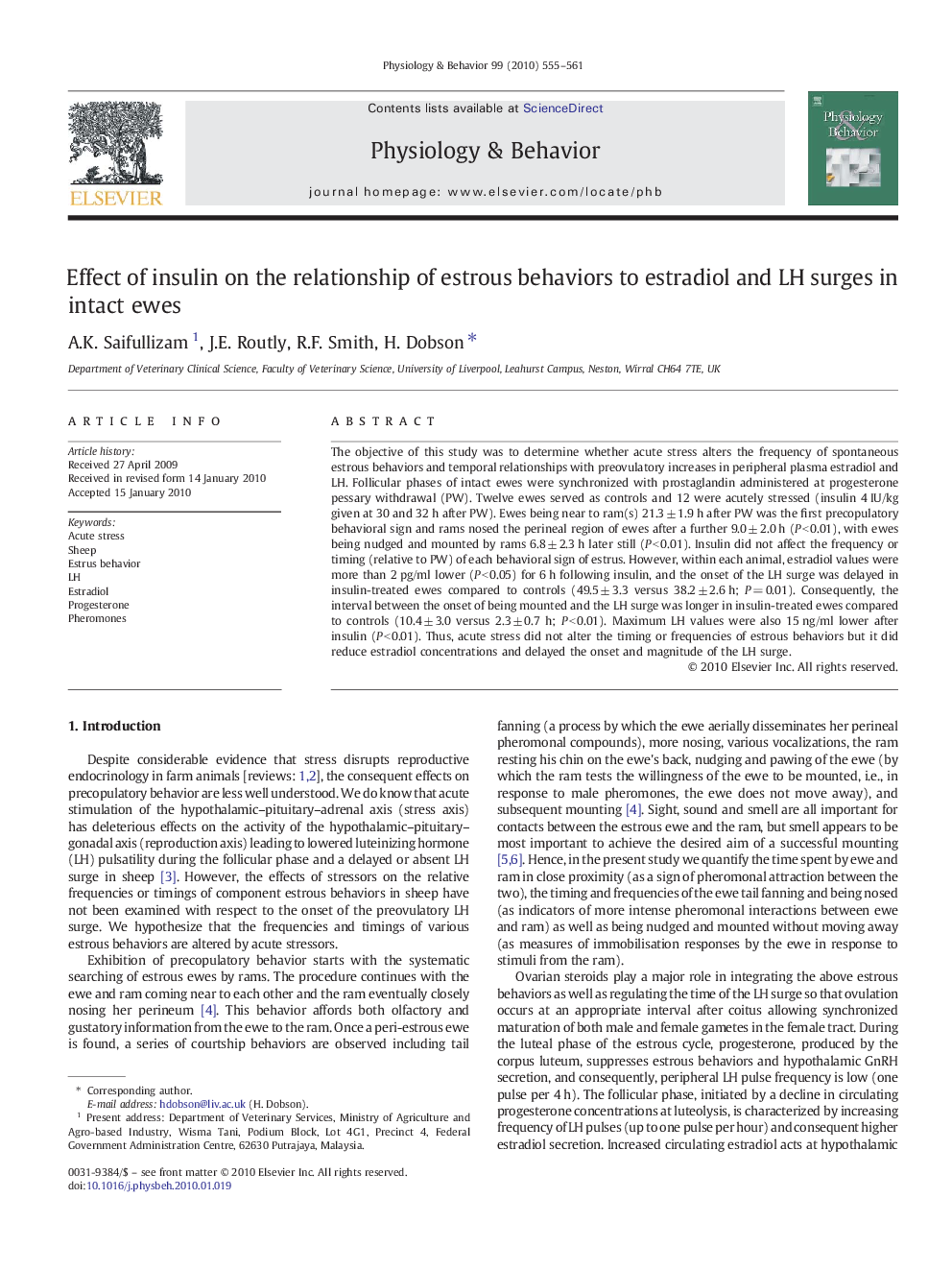| Article ID | Journal | Published Year | Pages | File Type |
|---|---|---|---|---|
| 2844951 | Physiology & Behavior | 2010 | 7 Pages |
The objective of this study was to determine whether acute stress alters the frequency of spontaneous estrous behaviors and temporal relationships with preovulatory increases in peripheral plasma estradiol and LH. Follicular phases of intact ewes were synchronized with prostaglandin administered at progesterone pessary withdrawal (PW). Twelve ewes served as controls and 12 were acutely stressed (insulin 4 IU/kg given at 30 and 32 h after PW). Ewes being near to ram(s) 21.3 ± 1.9 h after PW was the first precopulatory behavioral sign and rams nosed the perineal region of ewes after a further 9.0 ± 2.0 h (P < 0.01), with ewes being nudged and mounted by rams 6.8 ± 2.3 h later still (P < 0.01). Insulin did not affect the frequency or timing (relative to PW) of each behavioral sign of estrus. However, within each animal, estradiol values were more than 2 pg/ml lower (P < 0.05) for 6 h following insulin, and the onset of the LH surge was delayed in insulin-treated ewes compared to controls (49.5 ± 3.3 versus 38.2 ± 2.6 h; P = 0.01). Consequently, the interval between the onset of being mounted and the LH surge was longer in insulin-treated ewes compared to controls (10.4 ± 3.0 versus 2.3 ± 0.7 h; P < 0.01). Maximum LH values were also 15 ng/ml lower after insulin (P < 0.01). Thus, acute stress did not alter the timing or frequencies of estrous behaviors but it did reduce estradiol concentrations and delayed the onset and magnitude of the LH surge.
